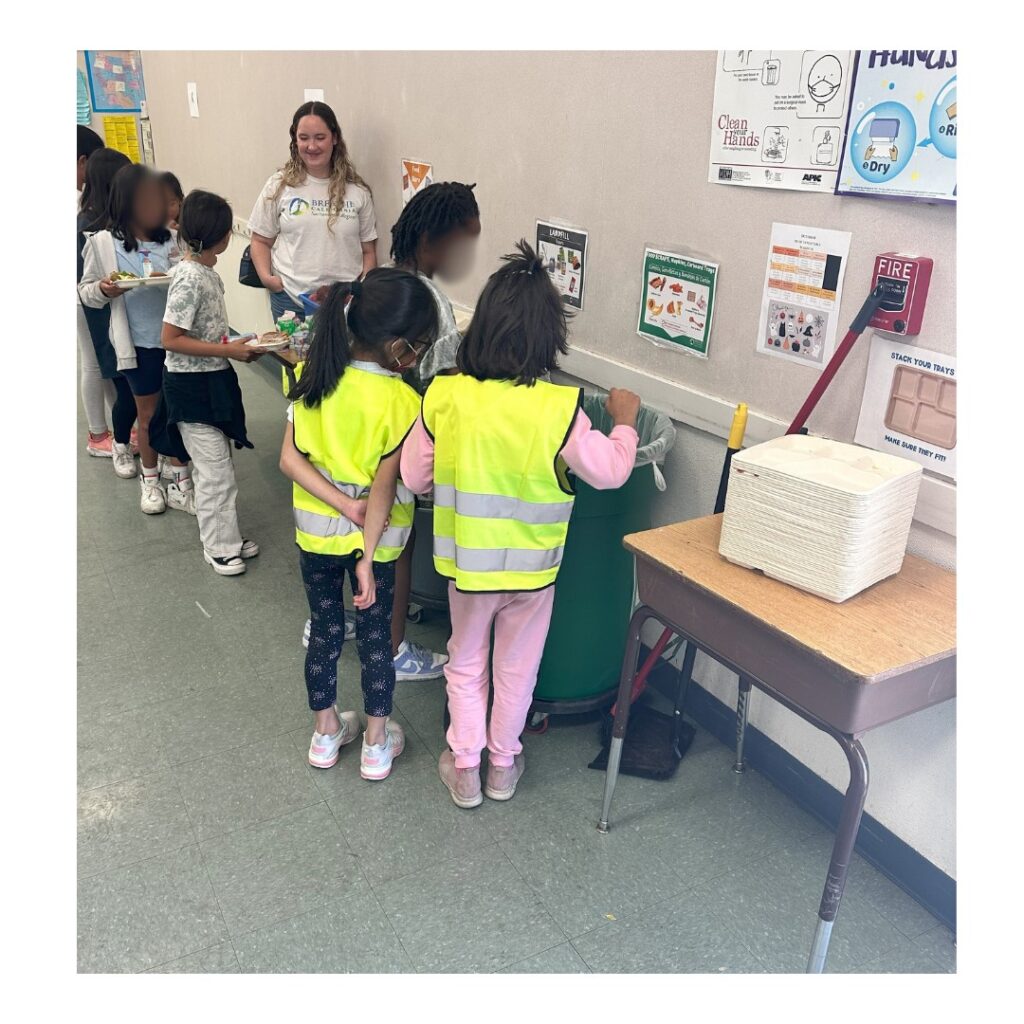
Sacramento Student Interns’ Insights: BREATHE Food Scrap Program in Schools
Over the last few months, I have seen Sac City Unified and Breathe California Sacramento Region (BREATHE) educate our students about waste sorting and its benefits. From adaptive and eager first and second graders at Ethel Phillips to the entrepreneurial Woodbine Elementary Super Sorters, students across the district are taking an active role in improving the environment. In this blog, I will talk about how the students are digesting the information, how the district as a whole is progressing, and how students and educators feel empowered to continue the process. Teaching students how to sort properly, whether you are young or old, can be hard. Despite the struggles, the results are wonderful; students of all ages can learn how to sort their food waste, it just takes time and patience.
Many schools in Sac City Unified are incorporating food waste sorting into their school mealtimes. Sac City Unified and BREATHE are helping students and staff in the district adapt to the idea of food scraps recycling. Melissa Hill works with BREATHE and goes to different schools in the district and does training with the students to teach them about sorting their food waste and how to sort properly for ten days. After the training, the rest is student and staff driven. Durning the ten days, BREATHE monitors the students to see how they are adjusting before they leave the school, eventually coming back after a few months. It takes time, but most of the students get the hang of it. Although it only takes a moment to sort, some kids are in a hurry for recess after lunch, so they don’t pay attention to what bin they are throwing their trash in, resulting in there being mixed waste (watch out for that).
BREATHE has been a big part in this process by putting time into educating the students and staff, monitoring the progress, and by using their skills to improve our district. I hope that educators and students feel empowered to sort their waste more, now knowing the efforts put into this process. I think that with more monitoring, the students and educators of the district can get us to complete zero food waste by the end of 2025.
Author: Student Intern: Ania Johnson